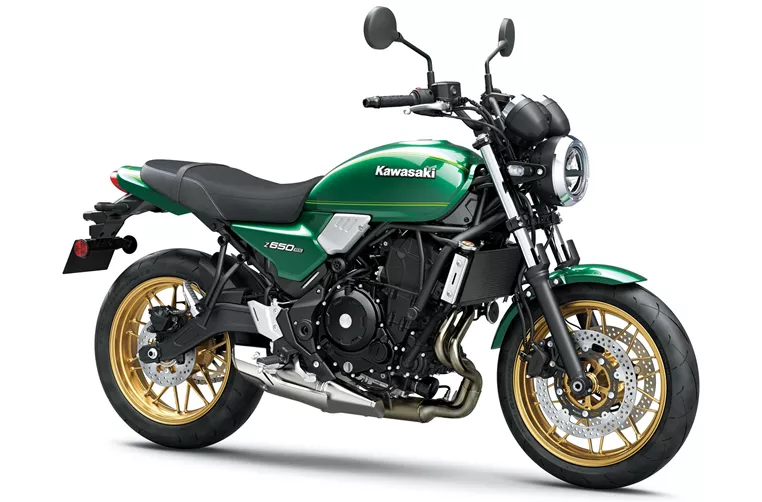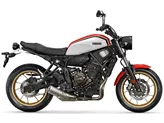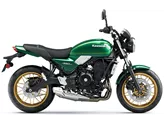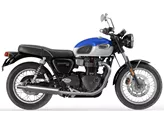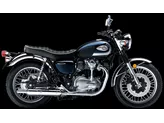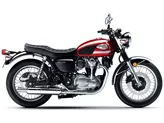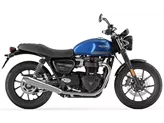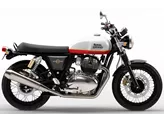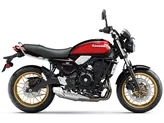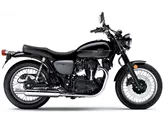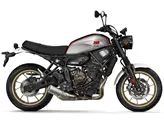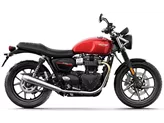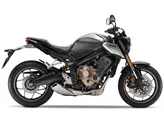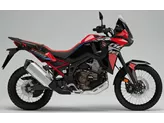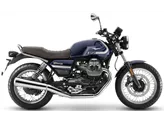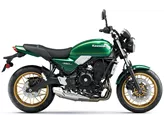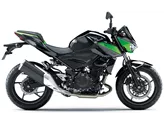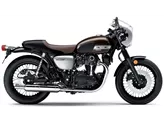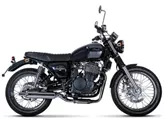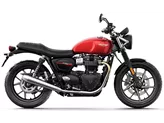Kawasaki W 800 2011 vs. Kawasaki Z650 RS 2022

Kawasaki W 800 2011
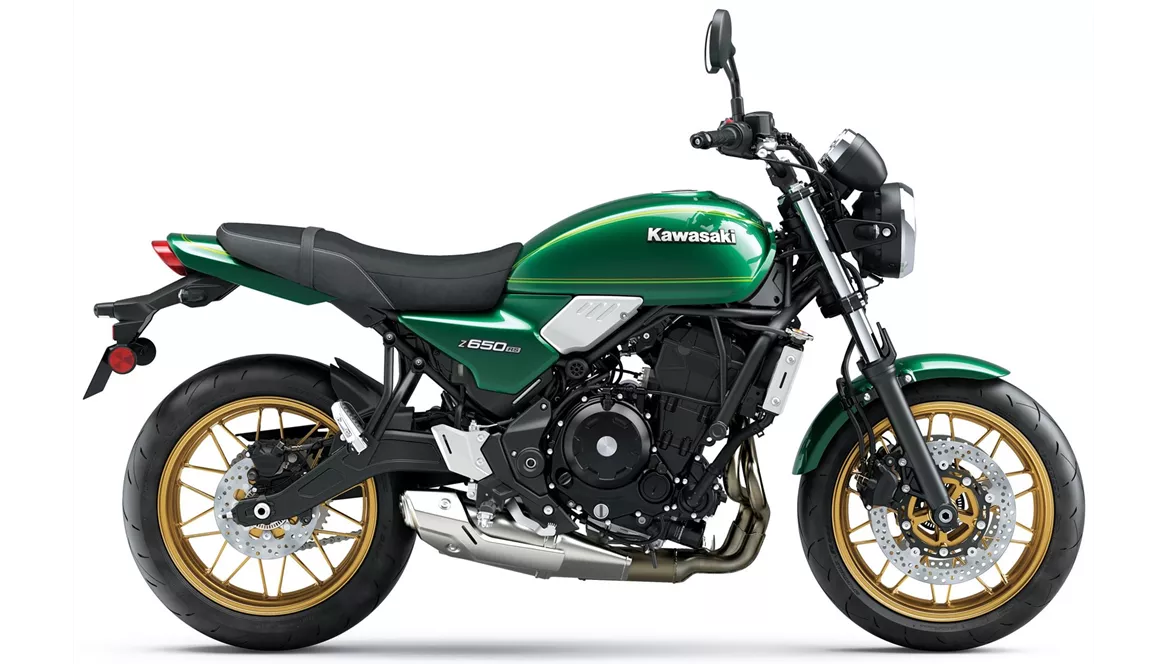
Kawasaki Z650 RS 2022
Overview - Kawasaki W 800 2011 vs Kawasaki Z650 RS 2022
The Kawasaki W 800 model year 2011 and the Kawasaki Z650 RS model year 2022 are both naked bikes with similar engine and drive train specifications. They both have an in-line engine with 2 cylinders, but there are some notable differences.
One major difference is in the cooling system. The W 800 uses an air-cooled engine, while the Z650 RS has a liquid-cooled engine. This means that the Z650 RS has a more efficient cooling system, which can lead to better overall performance and reliability.
In terms of displacement, the W 800 has a slightly larger engine with a displacement of 773cc, compared to the Z650 RS's 649cc engine. This means that the W 800 may have slightly more power and torque, which can result in higher speeds and a more exhilarating riding experience.
Both bikes have a steel frame, but the W 800 has a double cradle frame type, while the Z650 RS has a tubular frame type. The choice of frame type can affect the overall stiffness and handling characteristics of the bike. Without further information, it is difficult to determine which frame type is superior.

Kawasaki W 800 2011
When it comes to braking, both bikes have double piston front brakes, but the W 800's brakes are described as somewhat weak. This suggests that the Z650 RS may have more powerful brakes, providing better stopping power and control.
In terms of dimensions and weights, there are some notable differences. The Z650 RS has a narrower front tire width of 120mm, compared to the W 800's 100mm front tire width. The Z650 RS also has a shorter wheelbase of 1410mm, compared to the W 800's 1465mm wheelbase. These differences can affect the bike's maneuverability and stability.
The seat height of the Z650 RS is higher at 820mm, compared to the W 800's 790mm seat height. This may result in a slightly different riding position and comfort level for riders of different heights.
In terms of weight, the Z650 RS is lighter with a kerb weight of 185kg, compared to the W 800's 216kg kerb weight. A lighter bike can offer better agility and handling, especially in tight corners and city riding.

Kawasaki Z650 RS 2022
Both bikes have a fuel tank capacity of around 14-15 liters, providing a decent range for longer rides.
In terms of strengths, the W 800 is praised for its high speeds achievable, relaxed driving experience, and convincing appearance. On the other hand, the Z650 RS is commended for its perfectly realized retro design, analogue displays, lively engine, accessible handling, powerful brakes, comfortable ergonomics, adjustable levers, and being a real eye-catcher.
As for weaknesses, the W 800 is criticized for its laterally installed king shaft corresponding to old technology, annoying chassis, somewhat weak brakes, and modest performance. The Z650 RS's only mentioned weakness is a slightly softer sound.
In conclusion, while both bikes have their own strengths and weaknesses, the Kawasaki Z650 RS 2022 seems to offer a more modern and refined riding experience with its liquid-cooled engine, improved brakes, and lighter weight. However, some riders may still prefer the classic styling and potentially higher performance of the Kawasaki W 800 2011. Ultimately, the choice between the two will depend on individual preferences and priorities.
Technical Specifications Kawasaki W 800 2011 compared to Kawasaki Z650 RS 2022
Pros and Cons in comparison
Pros and Cons in comparison
Kawasaki W 800 2011

Kawasaki shows how retro really works. There is endless beauty on the W 800, but it is also a good starting point for scrambler or café racer conversions.
Kawasaki Z650 RS 2022
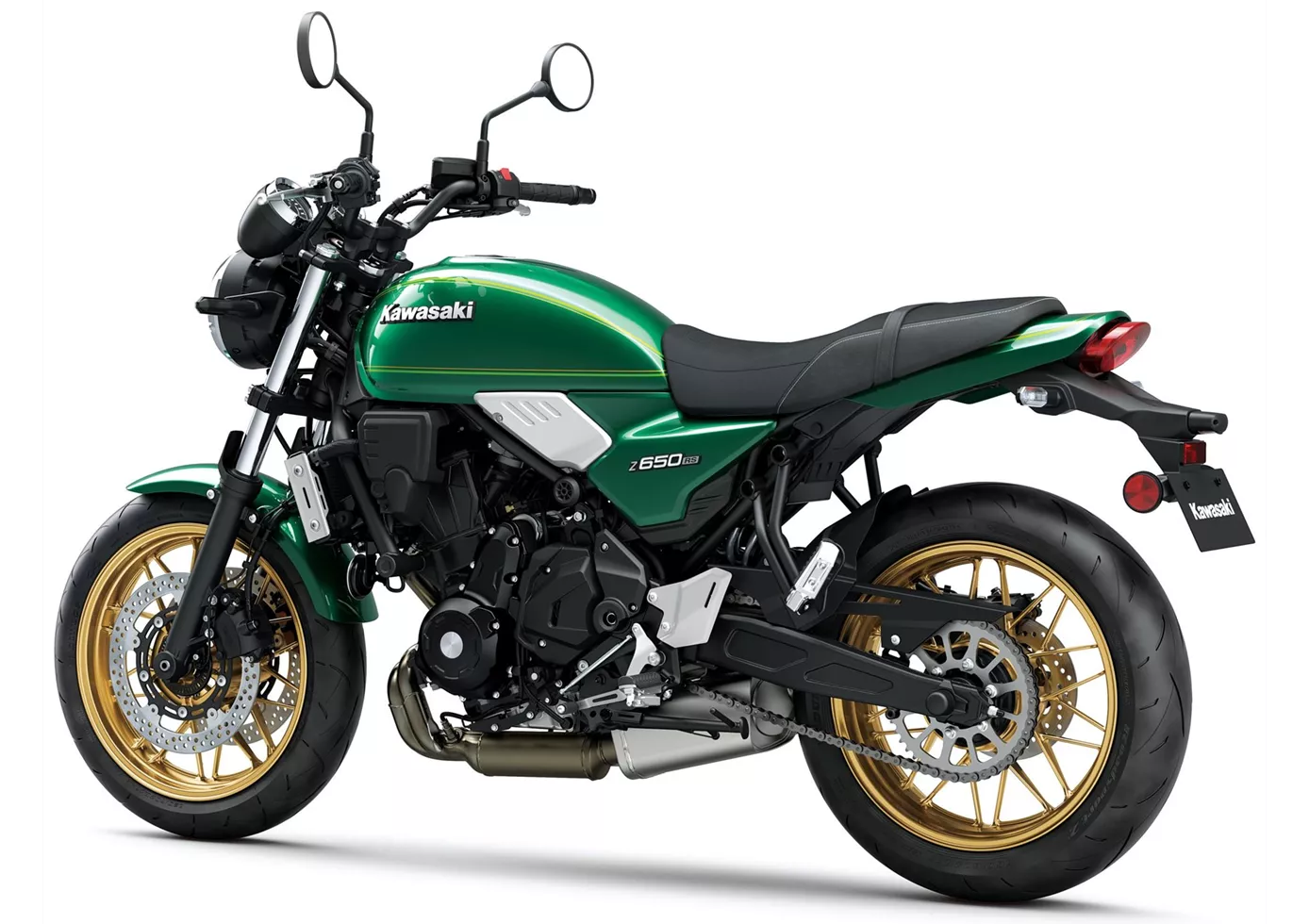
With the RS, Kawasaki proves that it has mastered the art of retro bikes. You immediately forget that underneath the pretty dress is the normal Z650, because thanks to the right details, the retro design has been convincingly implemented. In the saddle, you enjoy the accessibility that you know from the technical sister. A retro bike that both beginners and experienced bikers will really enjoy!
Price Comparison Avarage Market Price Kawasaki W 800 vs Kawasaki Z650 RS
There are a few key differences between a Kawasaki W 800 2011 and a Kawasaki Z650 RS 2022. In terms of price, the actual average price of a Kawasaki Z650 RS 2022 is about 34% higher. A Kawasaki W 800 2011 experiences a loss of 120 GBP in one year of ownership. This is offset by a loss of 300 GBP for a Kawasaki Z650 RS 2022. Compared to Kawasaki Z650 RS 2022 there are less Kawasaki W 800 2011 bikes available on the 1000PS.de Marketplace, specifically 5 compared to 34. It takes less time to sell a Kawasaki W 800 with 72 days compared to 146 days for a Kawasaki Z650 RS. Since model year 2011 1000PS.de editors have written 13 reviews for the Kawasaki W 800 and 12 reviews for the Kawasaki Z650 RS since model year 2022. The first review for the Kawasaki W 800 was published on 05/10/2010 and now has more than 18,200 views. This compares to more than 39,300 views for the first review on Kawasaki Z650 RS published on 27/09/2021.

